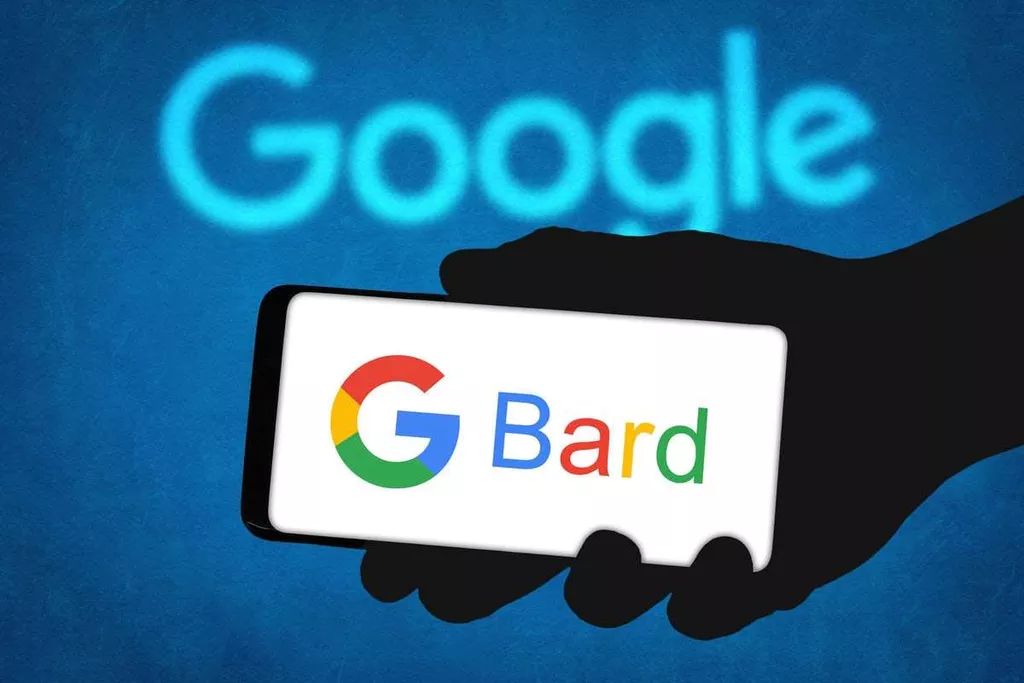New study: 80% of companies invest in conversational engagement

When conversing with the customers, you may have to access some personal, sensitive information. You can do this right before you start the conversation by giving a disclaimer and then providing the GDPR. Along with asking for their consent, you should also allow them to opt out when they do not accept it, ensure anonymity, and notify them when there is a data breach.
- So whether it’s through social media, via Alexa and Cortana, or even new direct-to-consumer solutions, consumers are letting brands into their personal space via technology.
- The chatbot technology also employs advanced natural language understanding techniques to enable it to understand customer questions and provide accurate responses without the need for complex programming.
- From one-time transactions to personalized, one-to-one experiences – the way customers interact with their favorite brands continues to evolve.
- A healthy conversation with customers by knowing their problems goes a long way.
- Conversational AI is a powerful tool for businesses looking to boost customer engagement.
- Consumer sentiment toward messaging and AI is highly positive, but brands have yet to fully capitalize on the opportunity.Consumers, especially Gen Z, continue to embrace automation and messaging with brands.
Traditional marketing approaches are focused on making a sale by influencing prospects as quickly as possible. This can happen through live chat on a website or support portal, or by using chatbots and AI to help navigate users toward their intended destination or answer their questions. Conversational marketing also can take a heavy burden off of sales teams by gaining insights about prospects early, leading to more meaningful conversations when the time comes to engage in the sales process. As important as it is for marketers to actively listen to customers to gain a deeper understanding of their needs, it is equally important to interact with customers in real-time to guide them through their buying journey.
Cable and telco customer engagement
Real-time conversations with customers are important in today’s business environments where customer satisfaction is the foundation for business growth. Customer engagement paves the path to increased customer satisfaction and company profits, and contributes to market share gain. To provide true conversational metadialog.com customer experience, you need omnichannel capabilities, a full overview of the customer, agent empowerment and support, flexible co-creation, as well as data analytics and reports. Frictionless customer experiences are also important for customer retention and customer lifetime value.

Although Instacart is not a retailer, it enables third-party conversational commerce experiences between brick-and-mortar retailers and customers–a testament to the blurring lines of ecommerce and the real world. While these are all unique channels that foster conversational commerce experiences for shoppers, on the back end they are all the same. These are tools that a part of conversational commerce, not conversational commerce itself. From sales to support, Zendesk helps companies deliver conversational customer relationships at any scale. In 2023, conversational commerce can refer to the numerous ways ecommerce and retailers use messaging and conversational technology, like AI and bots, to enhance and support the shopping experience. However, brands appear to be giving themselves better marks than their consumers do.
Why is conversational marketing important?
Moreover, Consumer behavior analysis and market dynamics (drivers, restraints, opportunities) provides crucial information for knowing the Conversational Customer Engagement Software market. The report focuses on the Conversational Customer Engagement Software market size, segment size (mainly covering product type, application, and geography), competitor landscape, recent status, and development trends. This report focuses on the Conversational Customer Engagement Software in global market, especially in North America, Europe and Asia-Pacific, South America, Middle East and Africa. This report categorizes the market based on manufacturers, regions, type and application. North America, especially The United States, will still play an important role which cannot be ignored. Any changes from United States might affect the development trend of Conversational Customer Engagement Software.
- The image below illustrates how Hubtype connects consumer messaging apps + the Hubtype conversational customer engagement platform + your company’s tech stack.
- Innovation in conversational AI, fused with the propagation of messaging apps, is fuelling the progress of chatbots.
- In recent years, conversational marketing, which involves using chatbots and other conversational tools to engage with clients and provide them with the assistance they require, has gained widespread popularity.
- A wisely placed web widget, a proactive notification, and even a great AI chatbot can increase engagement by suggesting products and showing promotions.
- AI chatbots can provide information on various topics, such as news updates, weather forecasts, and general knowledge.
- Therefore, by automating certain tasks and providing instant and accurate responses to customer queries, Conversational AI can significantly reduce the need for human support and thereby help businesses save costs.
Regardless of the messaging channel customers use, businesses can provide them with a seamless support experience. While these protect customers from spam, they put restrictions on when support agents can message customers. Failure to respond on time could potentially lead to disjointed conversations and dissatisfied customers. E4CC, an English language training provider for Latin Americans seeking jobs in call centers, enhanced its conversational customer service approach using respond.io. In the past, agents were in charge of guiding contacts through the sales funnel.
Deliver Great Customer Experiences with Conversational Support
Think about how you feel when you chat with a friend who can never remember the details of your past conversations. According to HubSpot, 33% of customers say they don’t want to repeat information they’ve already shared. Say hello and join the conversations in what some experts call the conversational age for customer service. Email may be the right channel while someone is at work and has questions about the status of an order. A chatbot makes sense if a customer is on your website looking for answers. A social messaging app works well when they’re using a smartphone, but a hands-free phone call may be necessary if they’re commuting.
What is conversational customer engagement?
Conversational customer engagement specifically refers to connecting with customers via messaging channels. Because messaging conversations happen in near real-time between two people, they are more like “conversations” than communications through a channel like email.
AI-based technology which can break down and filter interactions and trigger the right channels and functions; 3. ChatGPT has already proven to be an effective tool for creating engaging customer experiences. With its natural language processing capabilities and its ability to generate personalized responses, ChatGPT is an ideal solution for businesses looking to create seamless, engaging customer experiences.
Why do you need a conversational platform?
Conversational data, when stored securely, can be used to authenticate customers and treat them to a more personalized experience. Rather than being treated like a stranger, they’re recognized and appreciated as the loyal customers they are. Conversational AI can automatically gather insights such as key data points, purchasing patterns, and customer habits. It can store information on the types of questions being asked and the complexity of those questions, allowing you to be better equipped for upsell conversations. As more businesses join the ecosystem, the experience will only improve for consumers, leading to greater adoption and, thus, better outcomes for businesses. “Imagine if Coca-Cola had a profile on every person who has purchased Diet Coke over the last 30 years.
What are the 4 levels of customer engagement?
There are four key types of customer engagement:
Contextual engagement. Engagement of convenience. Emotional engagement. Social engagement.
For example, 57% of consumers say long wait times matter more to them now than they did a year ago. TA Digital is the only global boutique agency that delivers the “best of both worlds” to clients seeking to achieve organizational success through digital transformation. There are multiple areas in the field of AI, out of which conversational AI is the most sought after around the globe.
What is conversational commerce?
Cultivating the customer-first philosophy requires your business to be there for them — 24/7, 365 days. Offering round-the-clock support to stay competitive and drive customer engagement requires hiring customer service executives in shifts, a rather costly affair. Research by Oracle suggests that 82% of consumers would switch a brand if unsatisfied with their customer service department.
- According to HubSpot, 33% of customers say they don’t want to repeat information they’ve already shared.
- The customer experience (CX) is your consumer’s perception of your business based on their interactions.
- In fact, there are some common hurdles that businesses may experience when changing their support approach from transactional to conversational.
- From poorly automated Twitter responses, to that Target pregnancy reveal, it goes to show that technology shouldn’t be applied, just for technology’s sake.
- Once the customer has entered the funnel, conversational customer engagement is used to turn their interest into a purchase.
- It uses sophisticated algorithms to understand customer inquiries, interpret the meaning behind them, and provide an informed and accurate response.
Well, it makes financial sense to engage customers using conversational messaging. When using this approach, you see better response rates and increased collection rates. Furthermore, operational costs are lowered and agents work more effectively. Since messages can be sent and managed at scale, each agent can handle multiple messages at once. Long wait times, repetitive inquiries, and frustrating experiences with automated phone systems are just a few of the inefficiencies that plague the current system. Conversational AI is a browser-based messaging service that connects customers with the platforms they use.
What is Conversational Customer Engagement?
Increasing numbers of businesses are shifting their attention to supplying services centered on customers 24 hours a day, seven days a week, and 365 days a year. A Conversational AI chatbot allows companies of any size or type to perform previously prohibitively expensive or laborious tasks. There’s a good chance you may not know what conversational customer engagement is. It’s a new strategy that specifically responds to modern customers’ demand for brands that make personal connections with them. The flexibility of chatbot marketing means that it can be deployed on any digital platform owned or operated by the business, from website landing pages and mobile apps to social media platforms and internal portals. A chatbot can also speak to thousands of customers at once, whereas a human can only manage one at a time.
Conversational Messaging offers a great solution to improve the overall customer experience with these features. Conversational messaging solutions can handle millions of inquiries simultaneously, and these interactions can be highly tailored. With the help of AI and Natural Language Processing, consumer queries and grievances are assessed and transformed into a structured query that the business is prepared to respond to. Keeping track of how customers interact with your brand can help you understand where you need to improve. You can track metrics such as messages sent, delivered, and opened rates – as well as the engagement levels on a certain campaign or the number of participants in a survey. In fact, 90% of business leaders have improved their customer experience since using data analytics reports.
How can I be conversational in customer service?
- Build trust and address customers by name.
- Use an omnichannel contact center platform.
- Make coaching conversational.
- Shift your language.
- Mirror your customers' tone.
- Reduce your response time.
Theo Healthplus.vn







Chưa có bình luận